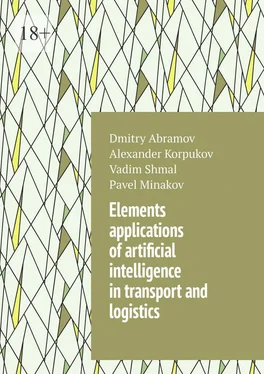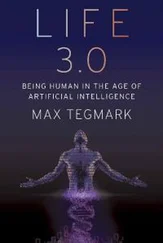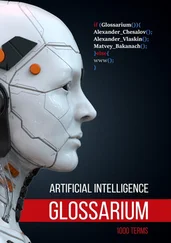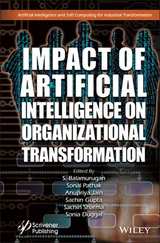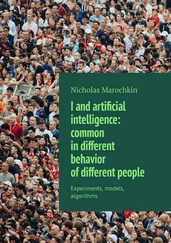The system also had some limitations due to the rules. Rules can only be defined based on a limited number of labels. For example, when rules are given, they should define what the labels mean. They can only be applied to positive results. However, as the system’s ability to process information has grown, it has been shown that the system can make mistakes. In particular, if it had to apply the same label to two different objects (and still detect an error), it could not make a useful distinction between the two objects, and then decide which label should be applied.
Minsky and Simon focused on applying their system to humans. They developed a system they called a «living program» or «projective computing system» (PPAS). They used PPAS to create a symbolic approach to the study of psychology. This would have an advantage that, unlike traditional programs, the teaching could be programmed. The program had to use symbols to describe the human system, and then train the system through explanations. They later called this approach «general computing», which allows you to study any problem with enough time and data.
For Minsky and Simon, the main limitation of their system was its ability to accurately calculate the results of the system. This limitation was not related to any flaws in their system; the system worked, but was slow and expensive. For this reason, they thought they could get around this by programming the results using so-called «functional programming» (FP). FP was about represented a British computer scientist the JCR Licklider in 1950. He is about refers to the programming style, which focuses on the main functions and behavior of programs, rather than the implementation of the program. Using FP, the system could compute the results, but then explain the cause of the problem using human language.
Over the next decade, PPS and PPAS continued to grow, and in 1966, Minsky and Simon published an article titled Brain Activity Systems, which was the result of their research. Here they showed that there was a program that could be written that would read the brains of a number of volunteers and then track their brain activity. Each volunteer read a passage about how the brain works; they had to complete this task, and then measured the activity of the brain.
Specifically, the authors showed that their system is capable of responding to certain brain waves (also called rhythms) and that it can combine these brain waves in ways that help make sense of a subject. They showed that if the brainwave was a slow rhythm, the system was able to «remember» information it was exposed to earlier and «reactivate» it when needed. If the brainwave was a fast rhythm, the system could «cure» the forgetfulness of information by comparing it with another element.
When Minsky and Simon published their article, they have attracted a lot of attention, because they offered this kind of experimental system, which theoretically can be implemented. They were able to approach the study from the practical point of view.
In 1972, Minsky and Simon founded the Center for Behavioral Neuroscience in Ann Arbor, Michigan. They designed and conducted a series of experiments that led them to the following conclusions: «There was something different from the mind, something that distinguished it from any other organization»; «The data showed that our ideas about action and the brain were different»; «Our brain worked differently than other parts of the body»; «There is a possibility that the organization of the mind may be influenced by the activity of the brain»; «The minds are based on basic physical principles.»
They came to this conclusion because they saw the relationship between specific brain activity and a specific behavior or idea. In other words, if you go to the mind and see activity that looked like it came from the mind, and you saw behavior that looked like it came from the mind, then the behavior is likely to follow the behavior. And if the mind was «imprinted» on the behavior, then it had to follow the action, and not vice versa. They began to formulate a new theory about how behavior arises and how mind is formed.
Minsky explained:
«The starting point was the work we did on the correlations between brain activity and human behavior. It was very clear to us that these correlations cannot be understood without first understanding how behavior is generated.»
The authors came to the conclusion that any inorganic system can act only on the basis of its internal states. If the internal states changed, then the behavior of the system would change. When the authors thought of a brain that responds to certain types of brain waves, they noticed that the brain would produce a certain behavior, and that this behavior would correspond to the internal state of the brain. This is a universal principle of nature. Since this principle of nature made behavior universal, it should lead the authors to the conclusion that if they applied these principles to the brain, they could create a computer program that would be able to reproduce the behavior of the brain.
Minsky believed that universal principles governing biological systems could be used to create computer software. However, Minsky admitted that his ideas were «science fiction.» It took Minsky and Simon another year to find a way to create a computer that could mimic their discoveries. But by 1972, they had developed a computer program that could test their theories.
John B. Barg, professor of psychology at Yale University, was also instrumental in the development of Minsky and Simon’s research. Barg helped found the Center for Behavioral Neuroscience at the University of Michigan in 1972, where Minsky and Simon continued to experiment with human and animal behavior.
The field of artificial intelligence research began in a seminar at Dartmouth College in 1956, where the term «artificial intelligence» was first coined. The following year, in 1957, Massachusetts Institute of Technology, together with its research graduate students, formed a new organization of AI researchers called the SIGINT-A (Intelligence and Scientific Computing) Committee. After creating many of the foundations of artificial intelligence, members of this group did some research on a similar program at Stanford University. The group decided to keep the name SIGINT-A and develop a new research and development program in the field of artificial intelligence. SIGINT-A became the research and development group that eventually became the world famous artificial intelligence laboratory that now bears his name. SIGINT-A is a legendary research organization. There are many famous names in this area in its history. Many famous names in the field of AI have been taken from SIGINT-A. Many projects have been implemented in the laboratory. To meet engineering needs or to fulfill a new mission in a new era of artificial intelligence, SIGINT-A has never been afraid to try new things. And many of her ideas and directions have been accepted in the generally accepted field. Many of what we now regard as leading AI tools, such as neural networks and helper vector machines, were created or adapted in the SIGINT-A era.
Computer science defines AI research as the study of «intelligent agents»: any device that perceives the environment and takes action based on what it perceives.
It is a common misconception that artificial intelligence research focuses on creating technologies that resemble human intelligence. However, as Alan Turing wrote, the most important attributes of human intelligence are not the pursuit of mathematical knowledge and the ability to reason, but the ability to learn from experience, perceive the environment, and so on. To understand how these properties of human intelligence can be used to improve other technologies, one must understand these characteristics of human intelligence.
Читать дальше
